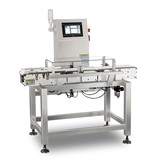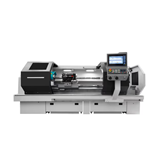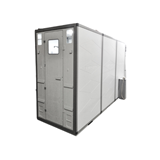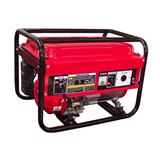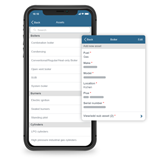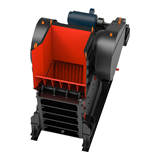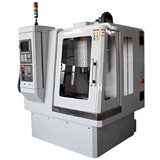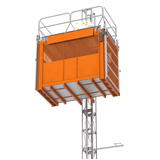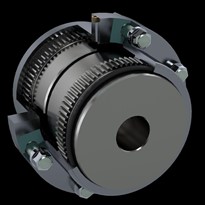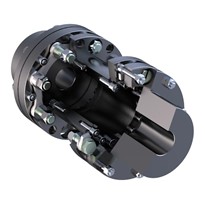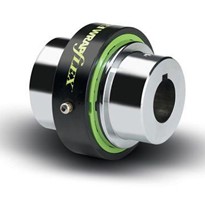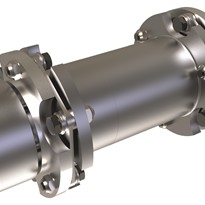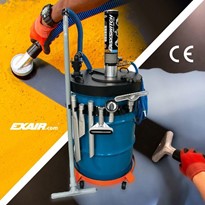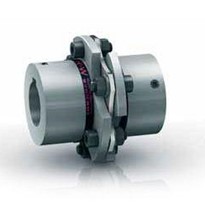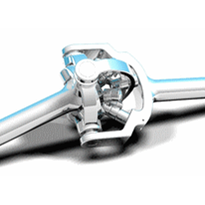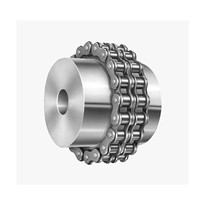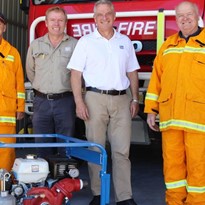Flexible coupling types
Disc - Popular in the oil, gas and petrochemical industries.
Often manufactured to API standards and available as standard, spark reduced or non-sparking. Long-lasting, allmetal construction with replaceable disc packs. High torques and good misalignment compensation. Maintenance-free.
Jaw – Cheap and simple, used in lower-cost, non-critical setups. Replaceable rubber elements and cast iron hubs. Nonlubricated and normally disposed of rather than maintained. Older technology.
Shear in place – Like Jaw but designed so the hubs are separated. In the event of an element failure, the driving hub disengages from the driven, spinning freely to avoid motor or pump damage. More expensive than Jaw initially but a better return in the long run with fast change out of elements without the need to remove hubs.
Grid – Toothed hubs are joined by a hi-tensile metal grid element. Higher cost but excellent torque transmission in a compact unit. Grease-lubricated, so they require some ongoing checks. All metal construction. Grid elements can be changed without the need to remove hubs.
Gear – Gear teeth in the hubs engage with teeth in the housing/sleeve. Very high torque and excellent misalignment capability. All metal construction. Requires regular greasing and maintenance checks. Extremely high loads. Popular on larger, high torque drives.
Rubber in compression – Hard rubber elements are compressed into pockets of the flex half of the coupling. High load and excellent at absorbing vibration (eg. diesel motors). Intrinsically failsafe so also popular on fire pumps (if the elements fail, the coupling will still drive). Good choice for
variable speed drives.
Tyre – Older rubber tyre couplings are old technology, cumbersome and induce higher axial loads on bearings. However, the new technology using split urethane elements and variable spacer lengths, makes the “modern” tyre coupling one of the most versatile and economic of all of the above. Inert to water and resistant to many chemicals. Fast change out and excellent for non-standard DBSE length situations.









-160x160-state_article-rel-cat.png)



